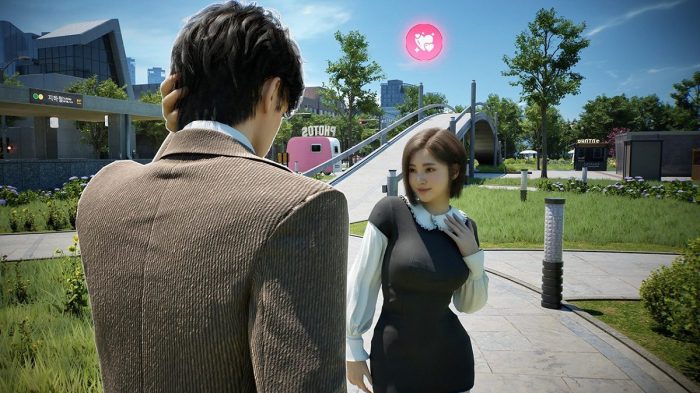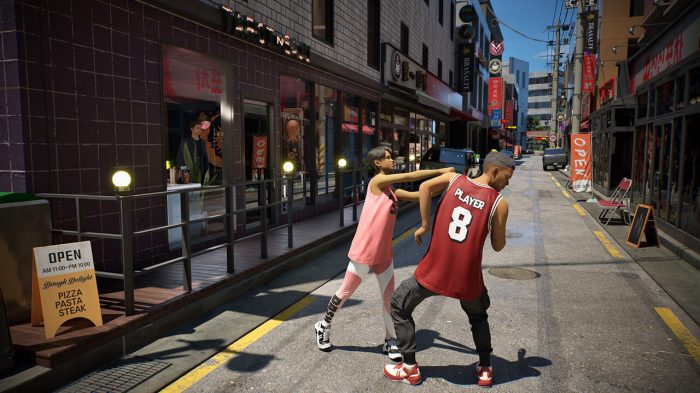Inzoi Game Soundtrack and Sound Effects: Enhance the Playing Experience, explores the transformative power of sound in video games. Sound design is more than just an afterthought; it’s a critical element that can elevate a game from good to great.
This exploration delves into the intricate ways sound impacts player immersion, engagement, and even gameplay mechanics. From the captivating melodies that set the mood to the realistic sound effects that bring the virtual world to life, Inzoi demonstrates the art of using sound to craft a truly memorable gaming experience.
The article will examine the specific sound design choices made for Inzoi, dissecting the musical themes, sound effects, and their impact on the overall gameplay. We will explore how sound influences player decisions, contributes to the game’s pacing and tension, and even shapes the player’s emotional response to the virtual world.
By examining the best practices in game sound design, the article aims to shed light on the crucial role sound plays in creating immersive and engaging gaming experiences.
The Power of Sound in Gaming
Sound design is an often-overlooked but essential element of the gaming experience. It has the power to immerse players in the game world, enhance engagement, and create memorable moments. Through the skillful use of music, sound effects, and voice acting, game developers can craft an audio landscape that complements and elevates the visual and narrative aspects of their games.
The Impact of Sound on Player Immersion and Engagement
Sound design plays a crucial role in immersing players in the game world and keeping them engaged. When implemented effectively, it can create a sense of presence and realism, drawing players into the game’s atmosphere and making them feel like they are part of the action.
- Atmospheric Sound Design: The use of ambient sounds, such as wind, rain, or birdsong, can create a sense of place and contribute to the overall atmosphere of the game world. For example, the rustling leaves and distant bird calls in a forest environment can evoke feelings of peace and tranquility, while the pounding rain and thunder in a stormy setting can create a sense of tension and unease.
- Sound Effects: Sound effects are essential for conveying the impact of actions and events in the game. For instance, the satisfying “thud” of a well-placed shot in a first-person shooter can enhance the player’s sense of agency and reward, while the screech of tires during a high-speed chase can heighten the adrenaline rush.
- Music: Music is a powerful tool for setting the tone and mood of a game. A well-crafted soundtrack can enhance the emotional impact of gameplay, underscore important moments in the story, and even influence player behavior. For example, a tense and dramatic soundtrack can heighten the tension during a boss battle, while a more upbeat and cheerful soundtrack can encourage exploration and discovery.
Examples of Games with Exceptional Soundtracks and Sound Effects
Numerous games have demonstrated the power of sound design to enhance the player experience. Some notable examples include:
- The Legend of Zelda: Ocarina of Time: This classic Nintendo 64 game features a memorable and iconic soundtrack that perfectly captures the spirit of the adventure. The music is both beautiful and evocative, helping to create a sense of wonder and excitement. The game also features a wide range of sound effects, from the gentle tinkling of rupees to the roar of Ganondorf’s attacks, all of which contribute to the game’s immersive atmosphere.
- Half-Life 2: The sound design in Half-Life 2 is particularly impressive, with its use of environmental sounds, realistic weapon effects, and dynamic music. The game’s soundtrack seamlessly blends with the gameplay, creating a sense of urgency and tension during combat sequences.
The sound effects, such as the clang of metal on metal and the hiss of the Combine’s energy weapons, are incredibly detailed and realistic, adding to the game’s overall sense of immersion.
- BioShock: BioShock is a game that effectively uses sound to create a unique and unsettling atmosphere. The game’s soundtrack features a mix of haunting melodies and unsettling sound effects, which contribute to the game’s creepy and claustrophobic setting.
The sound of dripping water, the echoes of footsteps in the empty corridors, and the distorted voices of the Little Sisters all create a sense of unease and tension, drawing players into the game’s world.
How Sound Can Enhance Gameplay Mechanics and Storytelling, Inzoi Game Soundtrack and Sound Effects: Enhance the Playing Experience
Sound design can be used to enhance gameplay mechanics and storytelling in numerous ways.
- Providing Feedback: Sound effects can provide players with immediate feedback on their actions, such as the sound of a successful attack or the clinking of coins when picking up treasure. This feedback can help players understand the consequences of their actions and make them feel more connected to the game world.
- Guiding Players: Sound can be used to guide players through the game world, such as the use of footsteps or music to indicate the location of enemies or hidden objects. Sound can also be used to warn players of danger, such as the sound of an alarm or the approaching footsteps of an enemy.
Inzoi Game Soundtrack and Sound Effects: Enhance the Playing Experience, a topic that has been a source of much discussion lately. It’s interesting to note that the impact of sound design can be as significant as the visuals, and even influence the choice of platform, as in the case of is black myth wukong on ps5 , where the immersive soundscape adds another layer to the experience.
The quality of the soundtrack and sound effects can truly make or break a game, and Inzoi’s focus on this element is a testament to their commitment to creating an engaging and memorable experience.
- Enhancing Storytelling: Music and sound effects can be used to enhance the emotional impact of storytelling. For example, a dramatic musical score can heighten the tension during a pivotal moment in the story, while a mournful melody can convey the sadness of a character’s loss.
Sound design can also be used to create a sense of mystery or suspense, building anticipation for the events that unfold in the game.
Inzoi Game Soundtrack

The Inzoi game soundtrack is meticulously crafted to immerse players in a world brimming with magic, mystery, and adventure. The music serves as an evocative backdrop, subtly guiding players through the game’s narrative and enhancing the overall experience. The soundtrack utilizes a blend of orchestral, electronic, and world music elements, creating a dynamic and engaging soundscape.
Musical Themes and Their Significance
The soundtrack features a variety of distinct musical themes that correspond to different locations, characters, and events within the game. These themes are carefully interwoven to create a cohesive and emotionally resonant experience for players.
- The main theme, often heard in the game’s opening sequence and during pivotal moments, evokes a sense of wonder and anticipation, setting the stage for the player’s journey.
- A haunting melody accompanies the exploration of ancient ruins, hinting at forgotten secrets and the mysteries that lie within.
- Upbeat and energetic music underscores moments of combat, adding intensity and excitement to the player’s encounters with enemies.
- The soundtrack also features a collection of ambient tracks that create a sense of place and atmosphere, enhancing the player’s immersion in the game world.
Instrumentation and Orchestration
The soundtrack utilizes a diverse range of instruments to create a rich and immersive soundscape. The use of traditional orchestral instruments, such as strings, brass, and woodwinds, adds depth and grandeur to the music. Electronic elements, such as synths and drum machines, are incorporated to create a modern and dynamic feel.
World music instruments, such as the sitar and the shakuhachi, are used to add a touch of exoticism and authenticity to the soundtrack.The orchestration of the soundtrack is carefully crafted to enhance the emotional impact of the music. The use of dynamic shifts, layered textures, and contrasting melodies creates a sense of tension, release, and excitement, mirroring the player’s journey through the game world.
Inzoi Game Sound Effects

Sound effects play a crucial role in creating a compelling and immersive gaming experience. They enhance realism, guide players through the game world, and amplify the emotional impact of gameplay. By carefully crafting and implementing sound effects, developers can elevate the player’s engagement and create a memorable experience.
Types of Sound Effects
Sound effects in games can be broadly categorized into several types, each serving a specific purpose. These types include:
- Environmental Sounds:These sounds establish the atmosphere of the game world, such as the rustling of leaves in a forest, the roar of a crowd in a stadium, or the hum of a bustling city. Environmental sounds contribute to the overall sense of realism and immersion.
- Character Sounds:These sounds represent the actions and movements of characters in the game. Examples include footsteps, weapon impacts, character dialogue, and breathing. Character sounds help players understand the actions of characters and create a sense of presence in the game world.
- Gameplay Sounds:These sounds are directly related to the gameplay mechanics and provide feedback to the player. Examples include the sound of a successful hit in a fighting game, the clinking of coins in a collecting game, or the sound of a power-up activating.
- Interface Sounds:These sounds are associated with the game’s user interface elements, such as menu navigation, button clicks, and notifications. Interface sounds provide auditory feedback to the player, guiding them through the game’s interface and enhancing usability.
Designing and Implementing Sound Effects
The design and implementation of sound effects involve a multi-step process that ensures the sounds are effective and seamlessly integrated into the game. Key steps include:
- Sound Design:Sound designers use various tools and techniques to create the desired sounds. This involves selecting appropriate sound sources, manipulating and editing the audio, and applying special effects to create unique and immersive sounds. For example, the sound of a gunshot might be created by combining recordings of real gunshots with digital effects to enhance the impact and realism.
- Sound Implementation:Once the sound effects are designed, they are integrated into the game engine. This involves assigning the sounds to specific events, objects, or actions within the game. The implementation ensures that the sounds play at the right time and in the right context, enhancing the player’s experience.
- Sound Mixing:Sound mixing is crucial for balancing the various sound elements within the game. This involves adjusting the volume, panning, and equalization of each sound to create a cohesive and immersive soundscape. For instance, in a combat scene, the sounds of explosions, weapon impacts, and character voices might need to be carefully balanced to create a realistic and impactful experience.
Examples of Effective Sound Effects
Here are some examples of how sound effects can enhance the gameplay experience:
- Footsteps:Different surfaces produce distinct sounds when walked upon. This helps players understand the environment and navigate the game world. For instance, the sound of footsteps on grass will be different from the sound of footsteps on concrete, providing players with auditory cues about the terrain they are traversing.
- Weapon Impacts:The impact of a weapon on an enemy or object should be impactful and realistic. This creates a visceral experience for the player, making the combat feel more engaging and immersive. For example, the sound of a sword hitting a shield should be different from the sound of a sword hitting flesh, providing players with auditory feedback about the effectiveness of their attacks.
- Environmental Sounds:These sounds create a sense of place and contribute to the overall atmosphere of the game. For example, the sound of rain falling on a rooftop can create a sense of loneliness and isolation, while the sound of birds chirping in a forest can create a sense of peace and tranquility.
The Impact of Sound on Gameplay

Sound plays a crucial role in enhancing the player experience in video games, particularly in games like Inzoi, where immersive gameplay and emotional engagement are paramount. The carefully crafted soundtrack and sound effects in Inzoi not only create a compelling atmosphere but also influence player decisions, actions, and overall enjoyment.
Sound and Player Decision-Making
Sound can subtly guide players’ choices and actions in Inzoi. For instance, a sudden change in the music or the introduction of a new sound effect might signal an impending threat, prompting players to take cover or prepare for battle.
The use of sound to convey information about the game world and its inhabitants can significantly impact player decision-making, encouraging them to explore, interact with their surroundings, or engage in specific actions.
For example, in Inzoi, the sound of a distant enemy might lead players to investigate and potentially engage in combat, while the gentle hum of a friendly creature could encourage exploration and interaction.
Sound and Game Pacing
The soundtrack and sound effects in Inzoi contribute significantly to the game’s pacing and rhythm. Fast-paced music and intense sound effects can heighten the tension during action sequences, encouraging players to react quickly and strategically. Conversely, slower and more melancholic music can create a sense of calm and contemplation, allowing players to take their time and explore the game world at their own pace.
Inzoi’s soundtrack effectively utilizes dynamic changes in tempo and intensity to match the player’s actions and the evolving narrative.
Sound and Emotional Response
Sound plays a critical role in shaping the player’s emotional response to the game. Inzoi utilizes a combination of music and sound effects to evoke a range of emotions, from excitement and suspense during combat to sadness and nostalgia during quieter moments.
The soundtrack can effectively amplify the emotional impact of key events in the game, immersing players in the story and its characters.
For example, a poignant musical score during a character’s death can create a profound emotional impact on the player, deepening their connection to the story and its characters.
Sound Design Best Practices: Inzoi Game Soundtrack And Sound Effects: Enhance The Playing Experience
Crafting immersive and impactful sound design for video games requires a deep understanding of best practices and a focus on the target audience and game genre. This section delves into the key elements of sound design, emphasizing the importance of collaboration between sound designers and game developers.
Target Audience and Game Genre
The target audience and game genre are crucial factors influencing sound design choices. Understanding the intended players allows sound designers to tailor the audio experience to their preferences and expectations. For example, a game targeting a younger audience might feature brighter and more playful sound effects, while a game targeting a mature audience might utilize darker and more atmospheric sounds.
The genre of the game also dictates the overall tone and style of the soundtrack and sound effects. For example, an action game might feature intense and dynamic music, while a puzzle game might utilize more ambient and atmospheric sounds.
Collaboration Between Sound Designers and Game Developers
Effective collaboration between sound designers and game developers is essential for creating a cohesive and impactful audio experience. This involves constant communication and feedback throughout the development process.
- Early Involvement: Sound designers should be involved in the early stages of game development to ensure that their input is considered in the design process. This early involvement allows them to understand the game’s mechanics, gameplay, and overall vision.
- Regular Communication: Open and frequent communication between sound designers and game developers is essential for ensuring that the audio design aligns with the game’s vision. This includes regular meetings, feedback sessions, and discussions about the sound design direction.
- Iterative Process: Sound design is an iterative process, and game developers should provide feedback to sound designers on their work. This feedback helps to ensure that the audio design meets the game’s needs and enhances the gameplay experience.